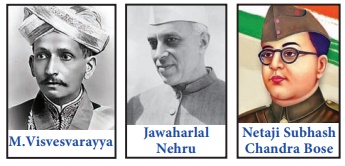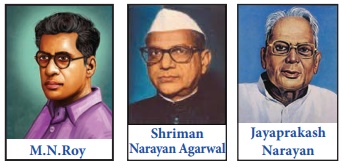Planning and Development Politics | Political Science - Planning: Meaning, Evolution and Objectives | 12th Political Science : Chapter 8 : Planning and Development Politics
Chapter: 12th Political Science : Chapter 8 : Planning and Development Politics
Planning: Meaning, Evolution and Objectives
Planning and
Development Politics
Planning: Meaning, Evolution and Objectives
Planning before Independence
Planning exists in all economies and
political systems. A planned system aims at the systematic utilization of the
available resources of the state for a long term progress. It is a process
where the state aims to increase its output, national dividend, employment and also
enhance the social welfare of the people. In such a system, all productive
units in a country use their resources according to the directives of the
government which is the central authority for development. It also includes
laying down targets for public and private enterprises by the state. The state
regulates and controls the functioning of both the private and public
enterprises. All economic activities of the State are regulated by the
government for the progress of the nation and the welfare of the people.
The modern state assumes welfare functions. Unlike the olden days, when states were “police states” concerned only with the security of the population and law and order, the welfare states have a wider role to play. They not only give good governance but also ensure socio-economic justice to the people. The democratic form of government gives opportunities and scope to realise the welfare state objectives of the modern state. The state recommends and implements socio economic reforms so that nations can shed their backwardness and move towards development. In India, the Planning Commission was set up with the objective of having a systematic process of planning in the nation so that the right strategy could be used for the appropriate utilization of resources of the country, for the needs of the present and the development of the future.

The need
for economic planning was realized in India even before independence. In 1936,
M.Visvesvarayya published a book entitled ‘Planned Economy for India’ in which
he proposed a ten year plan for India. He is considered a pioneer of economic
planning in India. In 1938, the National Planning Committee was initiated
within the All India Congress Committee by Netaji Subhash Chandra Bose. It had
the task of preparing an economic plan for India so that many of the economic
problems of the nation could be addressed. The committee could not complete its
task due to the outbreak of the world war II and the imprisonment of some of
the national leaders. In 1944, the Bombay Plan was prepared for economic
development by Indian industrialists M.N.Roy. He proposed a plan which was
called People’s plan which gave more importance to agriculture and small scale
industries. Later, the Gandhian Plan was put forward by Shriman Narayan Agarwal
in 1944 and in 1950 Jayaprakash Narayan drafted the Sarvodaya plan. All these
plans aimed at improving the economic conditions of the nation.

Planning after Independence
After Independence, the Directive Principles of
State Policy were enshrined in Part IV of the Indian constitution to ensure socio-economic
justice for the people. The constitution makers understood the importance of
economic development along with guaranteeing social justice. Thus planning was
considered essential for the long term development. Accordingly, the Government
of India adopted planning as a means of fostering economic development. The
Planning Commission was set up with the objective of increasing production so that
higher levels of national and per capita income could be achieved. It aimed at
guaranteeing employment and narrowing the gap between the rich and the poor. It
also aimed at establishing an egalitarian society by giving a wider role to the
state so that the goal of socio-economic justice could be guaranteed and
economic development could be realised.
Activity
Group Discussion
Teacher can divide the class into five
groups. Each group consists of three or five members and discuss the examples
given below in the class.
What may be development for one may not be development for the
other. Discuss.
Example 1: More wages means development for a worker, but it can go against the entrepreneur.
Example 2: A rich farmer or trader wants to sell food grains at a higher prices
but a poor worker wants to purchase it for low prices.
Example 3: Construction of a dam means more and cheap power, but people
who will lose their habitat will demonstrtate.
Example 4: TO get more electricity, the industrialists may want more dams. But
this may submerge the agricultural land and disrupt the lives of the people.
In this scenario it is worthy to follow the concept of
sustainable development.
Related Topics